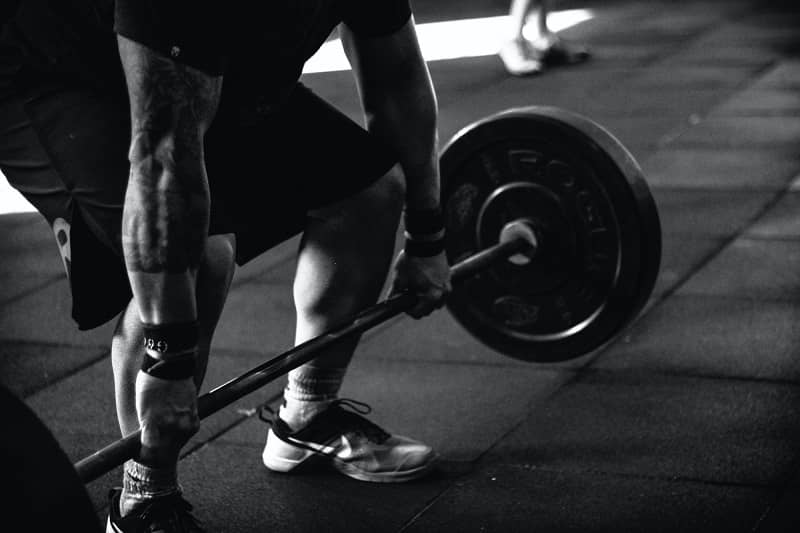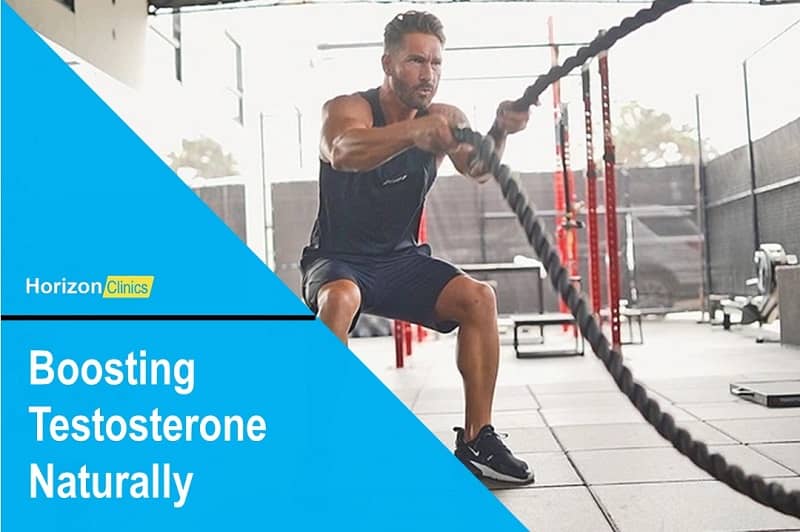Some exercises are proven to increase testosterone when done the right way!!
One of the most essential hormones produced in our body is testosterone.
It is mainly produced in men by the testicles and affects their appearance and sexual development.
In adults, a healthy level of testosterone is indispensable for lifelong health and well-being. Moreover, it helps to minimize the risk of disease and can improve sexual function and body composition.
It helps develop male traits, such as body and facial hair, higher muscle mass, a deeper voice, and stimulates sperm production in men.
In today’s blog, we address common concerns around low testosterone and how you can use exercises to increase testosterone.
Plus, we also answer the age-old question, Does Push Ups Increase Testosterone.
First, let’s have an overview of why you should be concerned if you’ve depleting T-levels.
Worried About Low T-Levels?
According to the Food and Drug Administration, an optimal range of testosterone is usually 300 to 1,000 ng/dL.
The serum testosterone test determines your level of testosterone through the blood.
American Urological Association found 2 out of 10 men above 60 years to have low testosterone. This further increases to 3 out of 10 men in their 70s and 80s.
Well, testosterone production typically decreases with age.
So, you need to pay attention to How to Boost Testosterone in order to maintain different aspects of your health?
Symptoms of Low Testosterone
An array of symptoms can occur if testosterone production drops below normal:
- Fatigue
- Low semen volume
- Hair loss
- Loss of muscle mass
- Increased body fat
- Decreased bone mass
- Mood changes
- Low sex drive
- Difficulty with erection
- Affected memory
- Smaller testicle size
- Low blood count
Are you also wanting to go for expensive supplements or testosterone replacement therapy to increase testosterone levels?
Stop!
Instead, you can try these exercises.
Exercises to Increase Testosterone Levels
Let’s talk about some of the Best Testosterone Boosting Exercises:
#1. Bodyweight Exercises

These commonly include Push-Ups, Pull-Ups, Sit-Ups. Many people are actually curious as to the role of push-ups in increasing testosterone.
Well, push-ups work because it’s also a bodyweight movement.
In fact, the Push Up Testosterone dynamic is specifically beneficial as it boosts T-count through protein synthesis.
Moreover, the Benefits of Push-Ups are unmatched:
- Improves range of muscles across your body
- Increases strength
- Boosts testosterone
Research suggests that regular physical activity by older men is linked to higher testosterone levels.
#2. High-Intensity Interval Training (HIIT)

- It is also known as high-intensity intermittent training or sprint interval training.
- It’s a kind of interval training, a cardiovascular training strategy alternating short periods of intense bodybuilding with less-intense recovery periods, until too exhausted to continue.
- It burns tons of calories during a short span of your time
- Boosts testosterone levels
- Reduces excess body fat and increases lean muscle mass
The research found that those performing 45 minutes of alternating between hard sprints and lightweight jogs every 90 seconds received a better boost to their testosterone levels than those running continuously for 45 minutes.
#3. Resistance Training

- It is also known as “weight training”
- It makes your muscles work against a weight force
- Builds muscle and fat
- Improves strength and endurance
- Enhances flexibility
- Boosts testosterone levels
- Weightlifting session for 30-minute improved testosterone levels by 21.6 percent (%)
Performing resistance training 3 times a week for 4 weeks increases testosterone levels immediately after the workout and over time.
However, you don’t need any specific equipment to do resistance training. You can simply use your weight to your advantage for the same.
What to Do?
Follow these steps to get the most out of the testosterone boosting workouts.
#1. Don’t Underestimate Your Leg
Testosterone increases are significantly higher in those exercising their lower body in addition to their upper body, revealed a study by the Institute of Sports Science and Clinical Biomechanics.
#2. Taking Rest is Essential
No doubt, rest is a crucial part of productive workouts.
Around 120 seconds of rest between exercises is better for raising testosterone.
Rest between exercise also helps in lifting more weight.
What Not to Do?
Avoid exercises that hurt testosterone and increase cortisol level (a stress hormone), such as cardio.
Additionally, take care of the following:
- Running or cycling for hours as endurance training
- Reduce stress
- Eating an unhealthy diet
- Use of unwanted body supplements
- Use of excess chemicals on the body
- Avoid drinking alcohol
Studies found T-level lowers down if you do not take care of the above facts.
Wrapping Up
If you have low testosterone and you’re keen to promote your T-levels, here are a few things you can try in addition to working out:
- Reduce your stress levels
- Have a regular healthy diet rich in protein, fat, and carbs
- Vitamin supplements, including vitamin B, vitamin D, and zinc are effective.
- Get a good quality of sleep (7-8 hours)
A healthy testosterone level is significant for your health and well-being in general.
These exercises can assist you naturally boost your body’s most vital hormones while also building strength, burning calories, and shredding body fat.
For more such content on health and workouts, click through our official website: https://horizonclinics.org/
